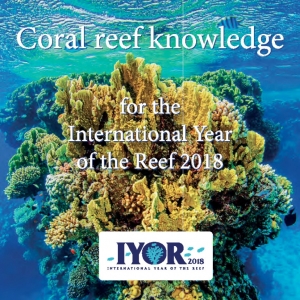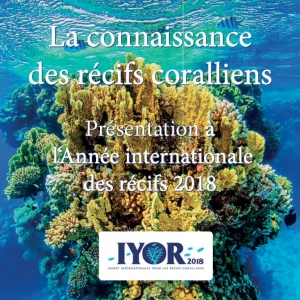Effects and Protection of Artificial Reefs - Eramus+ Application From
Coral Reef Knowledge
CMAS presents the booklet „Coral Reef Knowledge“ within the International Year of the Reef 2018. The purpose of IYOR 2018 is to raise awareness of the devastating prognoses for coral reefs and their effects on nature and humans as well as possible options for action in society. Therfore you will find all important facts about coral reefs and their environment in this booklet. It is available in english and french and support the Education for Sustainable Development. If you are interested to use the booklet in your own CMAS federation in another language, please, feel free to contact the President of the Scientific Committee.
Enjoy it in English and French online!
 In recent years, there is an increase in jellyfish blooms in the Mediterranean and Black Sea due to the changes in climate and food chains. Furthermore, new alien jellyfishes, like "Lessepsian species" that entered the eastern Mediterranean via the Suez Canal, cause serious problems in the Eastern Mediterranean Basin. This jellyfishes and gelatinous organisms clog fishing nets and damage mainly coastal fisheries. On the other hand, some venomous species may cause nuisance to bathers and especially they may become a real health hazard for babies and elderly individuals. Consequently, this has a negative impact on tourism and diving industry. It is known that thousands of people in Europeare hospitalized due to jellyfish sting in recent years. Therefore, we have just started a new programme to learn and understand abnormal jellyfish blooms, outbreaks and their negative impacts on the Eastern Mediterranean coasts on a scientific platform and to guide the decisions makers to elaborate prevention/adaptation measures.
In recent years, there is an increase in jellyfish blooms in the Mediterranean and Black Sea due to the changes in climate and food chains. Furthermore, new alien jellyfishes, like "Lessepsian species" that entered the eastern Mediterranean via the Suez Canal, cause serious problems in the Eastern Mediterranean Basin. This jellyfishes and gelatinous organisms clog fishing nets and damage mainly coastal fisheries. On the other hand, some venomous species may cause nuisance to bathers and especially they may become a real health hazard for babies and elderly individuals. Consequently, this has a negative impact on tourism and diving industry. It is known that thousands of people in Europeare hospitalized due to jellyfish sting in recent years. Therefore, we have just started a new programme to learn and understand abnormal jellyfish blooms, outbreaks and their negative impacts on the Eastern Mediterranean coasts on a scientific platform and to guide the decisions makers to elaborate prevention/adaptation measures.
A poster was prepared by CMAS, TSSF and Turkish Marine Research Foundation (TUDAV) to highlight the dangerous gelatinous organisms for human health. In this poster 13 gelatinous species are defined as alien/invasive and stingers. Among them, six species are defined as very harmful (shown by red arrow) while seven species are mildly harmful (shown by orange arrow) for the eastern Mediterranean region. By sending your information on these jellyfishes to TUDAV, you will be able to contribute to this programme and to the knowledge of marine species in the Easterm Mediterranean and the understanding of the effects of alien species. You can also learn about these species by checking the project website (www.yayakarsa.org) or the poster of jellyfish. This is a citizen science programme and we need your help. For this, you can send your photos and descriptions to our e-mail (denizanasi@tudav.org; tudav@tudav.org) or fill the form in our website www.yayakarsa.org.
The Phylum Cnidaria consists of about 10,000 species. Common jellyfish, anemones, corals, sea pens, cube shaped jellyfish are all cnidaria with diverse morphology. Cnidaria is characterized by cells called nematocytes (cnidocyte). These cells secrete a very special organelle called nematocyst (cnidocyst). Cnidocyst, sine qua non of cnidarian, is used for defense and prey. Inside the cnidocyst, there is an inverted tubule, venom and a huge osmotic pressure.
13 harmful gelatinous species presented in the poster
 The new CMAS booklets for children and young at heart allows you to explore environmental issues, engage in problem solving, and take action to improve the environment. As a result, you can develop a deeper understanding of environmental issues and have the skills to make informed and responsible decisions.
The new CMAS booklets for children and young at heart allows you to explore environmental issues, engage in problem solving, and take action to improve the environment. As a result, you can develop a deeper understanding of environmental issues and have the skills to make informed and responsible decisions.
The booklets are available in English, French and Spanish and support the Education for Sustainable Development.
If you are interested to use the booklet in your own CMAS federation and language, feel free to contact the President of the Scientific Committee.
Enjoy it!

























